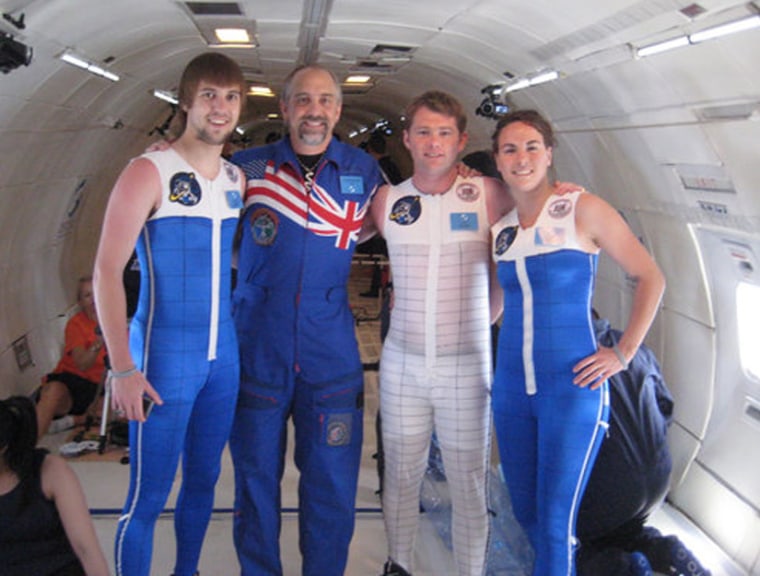Even exercising two hours a day isn't enough to keep astronauts' bones from breaking down during long-duration spaceflights. But could the answer to better health be hanging in the closet?
Researchers at Massachusetts Institute of Technology are working on a skin-tight space suit that puts pressure on the bones, similar to what naturally happens to the body from gravity on Earth.
The MIT suit, called the Gravity Loading Countermeasure Skinsuit (GLCS), is made of elastic mesh. It's cut short and has stirrups that loop over the feet, creating a stretch that stresses the legs and pulls slightly at the shoulders. The suit is sleeveless, since astronauts' arms don't significantly deteriorate in space. It is intended for use inside the spacecraft — not for spacewalking outside a pressurized spaceship.
For space-walking attire, "it is very important to get the 'squeeze' right, like a full-body girdle, as this is what is pressurizing the astronaut in the vacuum of space. In the GLCS, the squeeze is vertical — not around the body — so it tries to make you shorter, just like what your body weight is normally trying to do when you stand up," lead researcher James Waldie wrote in an email to Discovery News.
While suits for spacewalks are about as tight as a fully inflated blood pressure cuff, the GLCS suit exerts about the same amount of pressure as a pair of Lycra riding pants. "It is not tight at all," Waldie said.
"It's more like a uniform or pajamas," Waldie said.
Astronauts typically lose about 1 to 2 percent of their bone mass per month in orbit, despite rigorous, daily exercise. In comparison, a post-menopausal woman on Earth loses about that much bone in a year.
NASA has looked at gravity countermeasure suits for spacewalking in the past, but tabled the research due to technical and operational issues.
"It doesn't provide a uniform counter-pressure, like under the arms, behind the knee joint and elbow, and in the crotch area. Plus, it's an operational nightmare to get that suit on. You have to put on two or three layers," said senior engineer Joe Kosmo, with NASA's Johnson Space Center in Houston.
MIT and the European Space Agency have tested the new skinsuit during minutes of weightlessness on parabolic aircraft rides. A second-generation prototype is being developed so that more pressure will be put on the lower legs.
